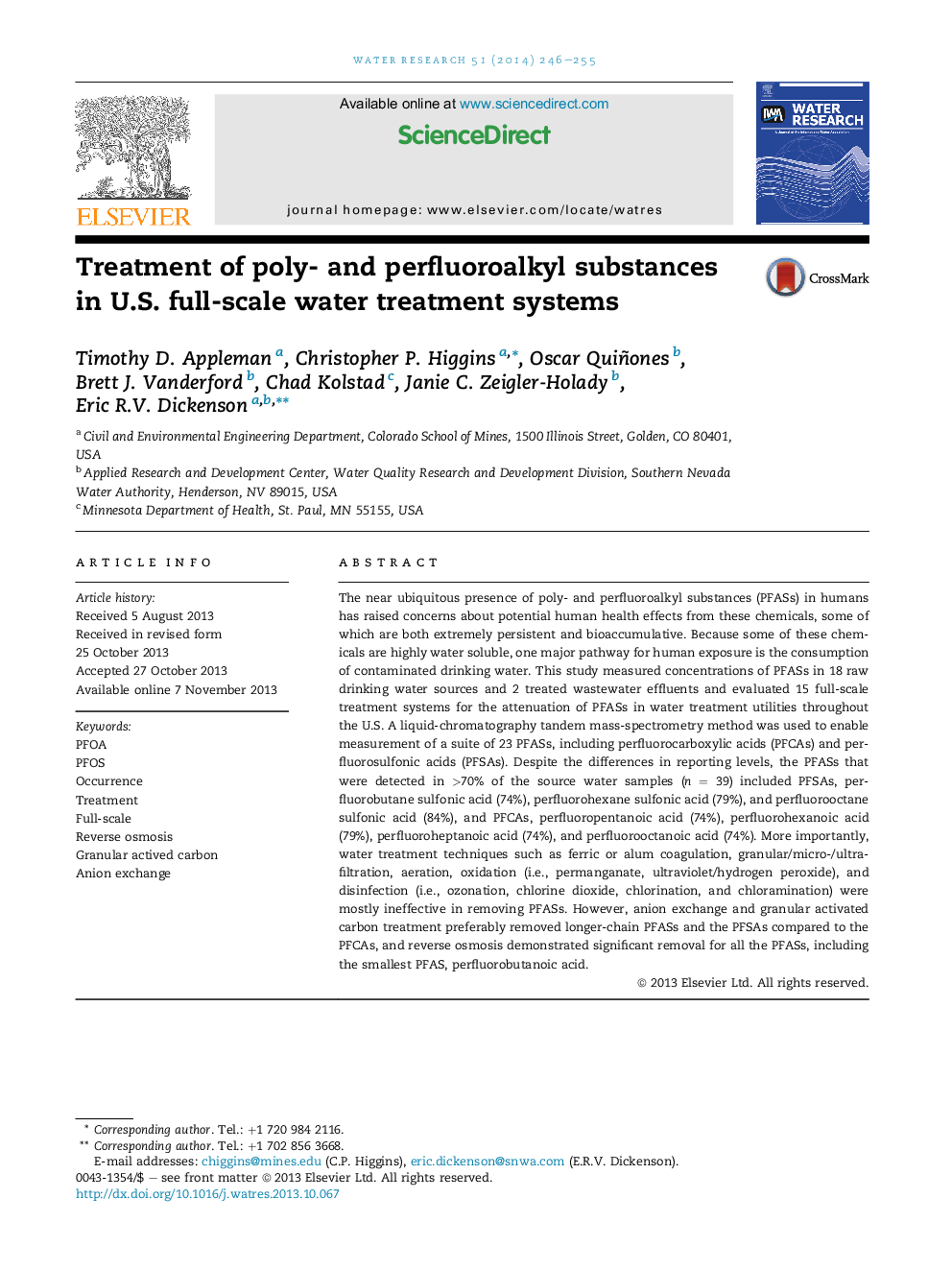| کد مقاله | کد نشریه | سال انتشار | مقاله انگلیسی | نسخه تمام متن |
|---|---|---|---|---|
| 4481646 | 1623117 | 2014 | 10 صفحه PDF | دانلود رایگان |
• Removal and occurrence of 23 PFASs measured at 15 U.S. water treatment plants.
• Conventional treatment techniques found to be ineffective for PFAS removal.
• Granular activated carbon and anion exchange were effective for longer chain PFASs.
• RO effectively removed all PFASs to below MRLs.
The near ubiquitous presence of poly- and perfluoroalkyl substances (PFASs) in humans has raised concerns about potential human health effects from these chemicals, some of which are both extremely persistent and bioaccumulative. Because some of these chemicals are highly water soluble, one major pathway for human exposure is the consumption of contaminated drinking water. This study measured concentrations of PFASs in 18 raw drinking water sources and 2 treated wastewater effluents and evaluated 15 full-scale treatment systems for the attenuation of PFASs in water treatment utilities throughout the U.S. A liquid-chromatography tandem mass-spectrometry method was used to enable measurement of a suite of 23 PFASs, including perfluorocarboxylic acids (PFCAs) and perfluorosulfonic acids (PFSAs). Despite the differences in reporting levels, the PFASs that were detected in >70% of the source water samples (n = 39) included PFSAs, perfluorobutane sulfonic acid (74%), perfluorohexane sulfonic acid (79%), and perfluorooctane sulfonic acid (84%), and PFCAs, perfluoropentanoic acid (74%), perfluorohexanoic acid (79%), perfluoroheptanoic acid (74%), and perfluorooctanoic acid (74%). More importantly, water treatment techniques such as ferric or alum coagulation, granular/micro-/ultra- filtration, aeration, oxidation (i.e., permanganate, ultraviolet/hydrogen peroxide), and disinfection (i.e., ozonation, chlorine dioxide, chlorination, and chloramination) were mostly ineffective in removing PFASs. However, anion exchange and granular activated carbon treatment preferably removed longer-chain PFASs and the PFSAs compared to the PFCAs, and reverse osmosis demonstrated significant removal for all the PFASs, including the smallest PFAS, perfluorobutanoic acid.
Journal: Water Research - Volume 51, 15 March 2014, Pages 246–255
